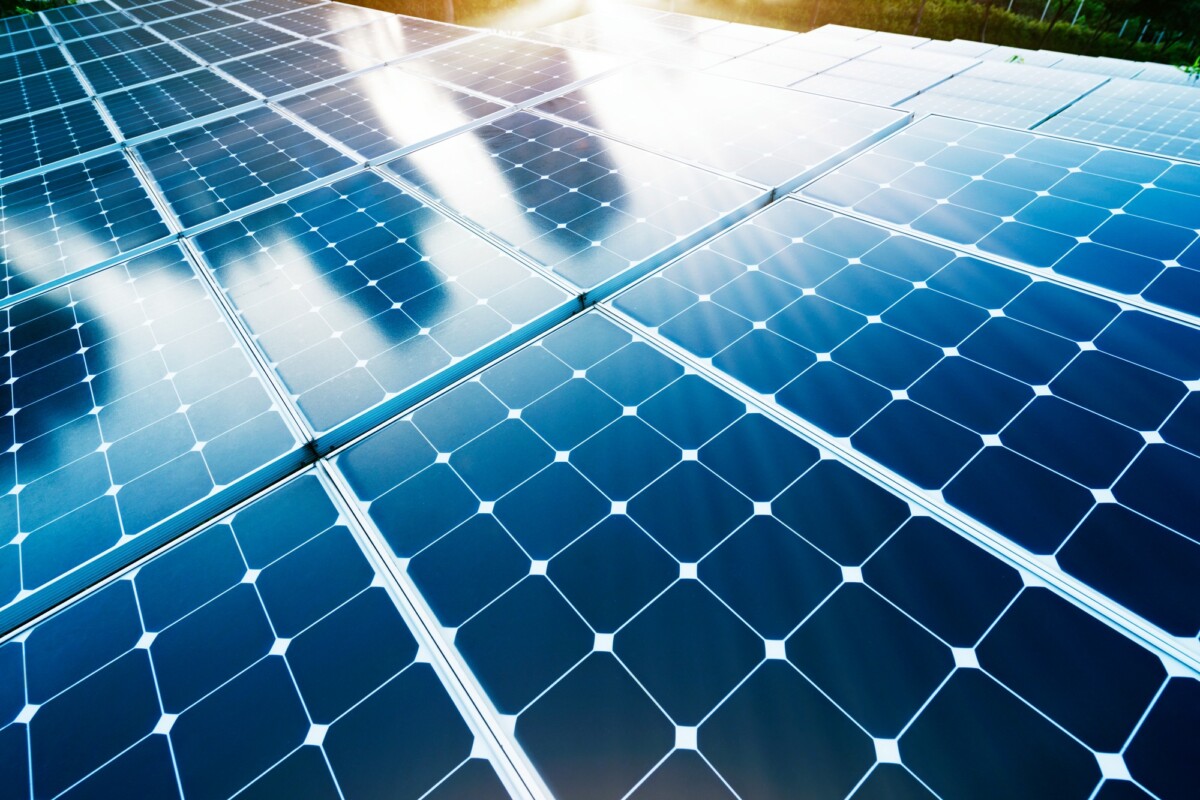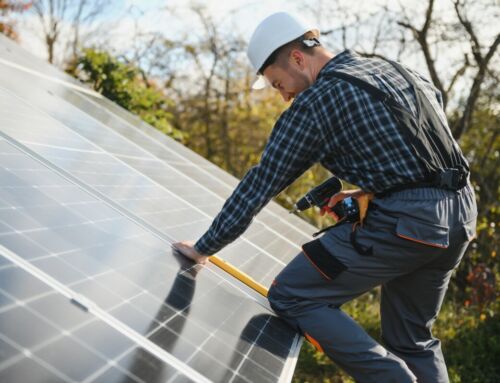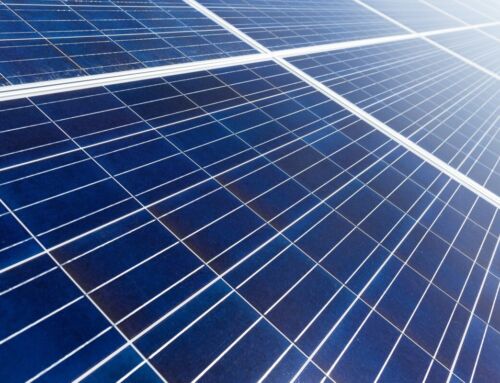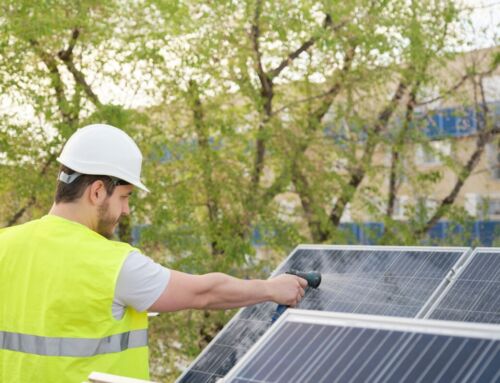Understanding the Basics: What Are Bifacial and Monocrystalline Panels?
In the ever-evolving world of solar technology, choosing the right type of solar panel can be daunting.
Bifacial vs Monocrystalline panels are two popular options, each with unique advantages. But how do you decide which is best for your needs? Let’s explore the basics of these two types of panels to help you make an informed decision.
What Are Bifacial Panels?
Bifacial panels are designed to capture sunlight from both sides, increasing their energy output. This dual-sided design allows them to harness reflected sunlight from surfaces like rooftops or the ground, making them highly efficient. They are ideal for areas with high albedo surfaces, such as snowy regions or reflective rooftops.
What Are Monocrystalline Panels?
Monocrystalline panels are known for their high efficiency and sleek design. Made from a single crystal structure, they offer superior performance in limited space. These panels are perfect for residential installations where space is at a premium, providing a reliable and long-lasting energy solution. When comparing
Bifacial vs Monocrystalline panels, consider your specific energy needs and environmental conditions. Bifacial panels offer higher efficiency in reflective environments, while monocrystalline panels provide consistent performance in smaller spaces. By understanding these differences, you can choose the solar solution that best fits your lifestyle and energy goals.
How Do Bifacial and Monocrystalline Panels Work?
When it comes to solar energy, the choice between
bifacial vs monocrystalline panels can be a game-changer. Both types of panels harness the sun’s power, but they do so in distinct ways, each offering unique benefits. Understanding how these panels work can help you make an informed decision for your energy needs.
Bifacial Panels: Double the Power
Bifacial panels are designed to capture sunlight from both sides, maximizing energy production. This dual-sided design allows them to absorb not only direct sunlight but also reflected light from surfaces like the ground or nearby structures. This can lead to increased efficiency, especially in areas with high albedo surfaces, such as snow or white rooftops.
- Increased Efficiency: By capturing reflected light, bifacial panels can produce up to 30% more energy compared to traditional panels.
- Durability: Often made with robust materials, they are designed to withstand harsh weather conditions.
Monocrystalline Panels: The Classic Choice
Monocrystalline panels are known for their high efficiency and sleek appearance. Made from a single crystal structure, they offer superior performance in low-light conditions, making them ideal for areas with less consistent sunlight.
- High Efficiency: These panels have a higher efficiency rate due to their pure silicon composition.
- Space-Saving: Their compact design makes them perfect for rooftops with limited space.
In the debate of
bifacial vs monocrystalline, your choice will depend on your specific energy needs and environmental conditions. Both options offer significant benefits, ensuring that you harness the sun’s power effectively.
Efficiency Showdown: Bifacial Vs Monocrystalline
In the world of solar energy, the debate of
Bifacial Vs Monocrystalline panels is heating up. With the promise of higher efficiency and better energy yield, choosing the right type can be daunting. But fear not, as we break down the essentials to help you make an informed decision.
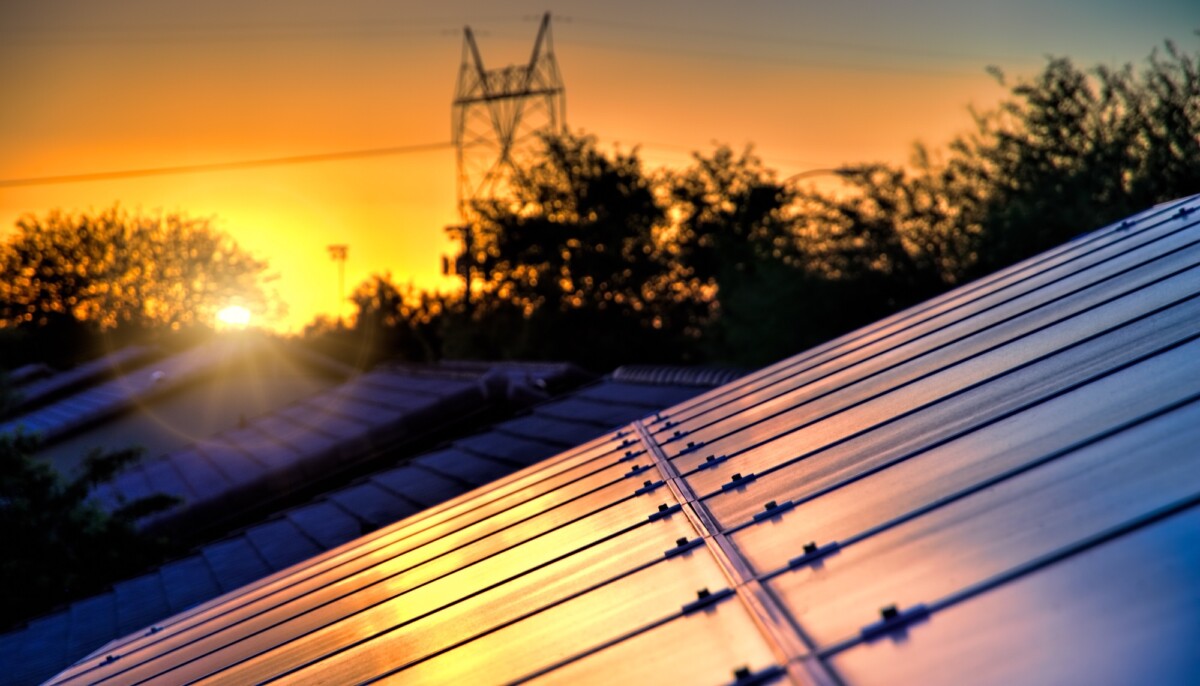
Thinking about solar energy? See how it can lower your bills and elevate your home’s efficiency. Get Your Free Estimate at NewSolar Quotes
Understanding Bifacial Solar Panels
Bifacial solar panels are designed to capture sunlight from both sides, maximizing energy production. This dual-sided technology allows them to harness reflected sunlight, which can significantly boost their efficiency. They are particularly effective in environments with high albedo, such as snowy or sandy areas, where the ground reflects more sunlight.
- Advantages:
- Increased energy yield
- Durability and longevity
- Aesthetic appeal
Exploring Monocrystalline Solar Panels
Monocrystalline panels are known for their high efficiency and sleek appearance. Made from a single crystal structure, they offer superior performance in limited space. These panels are ideal for residential installations where space is a premium and efficiency is paramount.
- Advantages:
- High efficiency
- Space-saving design
- Proven technology
When comparing
Bifacial Vs Monocrystalline, consider your environment and energy needs. Bifacial panels excel in reflective environments, while monocrystalline panels are perfect for maximizing efficiency in smaller spaces. Ultimately, the choice depends on your specific requirements and installation conditions.
Cost Comparison: Which Solar Panel Offers Better Value?
When it comes to choosing solar panels, the debate often centers around
Bifacial vs Monocrystalline. Both types offer unique advantages, but which one provides better value for your investment? This section will explore the cost implications of each, helping you make an informed decision that aligns with your budget and energy needs.
Initial Investment Costs
- Bifacial Panels: Typically, these panels have a higher upfront cost due to their advanced technology that captures sunlight from both sides. However, this can lead to increased energy production, potentially offsetting the initial expense over time.
- Monocrystalline Panels: Known for their efficiency and sleek design, these panels usually come with a lower initial price tag. They are a popular choice for residential installations where space is limited.
Long-term Savings
While bifacial panels might require a larger initial investment, their ability to harness more energy can lead to greater savings on electricity bills in the long run. Monocrystalline panels, on the other hand, offer consistent performance and reliability, which can also translate into significant savings over time.
Return on Investment
- Bifacial: The dual-sided energy capture can significantly boost your ROI, especially in environments with high albedo surfaces like snow or sand.
- Monocrystalline: Offers a steady ROI with predictable performance, making it a safe bet for those looking for reliability without the higher upfront cost.
In conclusion, the choice between
Bifacial vs Monocrystalline panels depends largely on your specific needs and financial situation. Consider your location, energy goals, and budget to determine which option offers the best value for you.
Durability and Lifespan: Which Panel Stands the Test of Time?
When it comes to solar panels, the debate between
Bifacial Vs Monocrystalline often centers on durability and lifespan. Both types promise long-lasting performance, but which truly stands the test of time? Understanding the differences in their construction and material can help you make an informed decision that ensures your investment pays off in the long run.
Material and Construction
- Bifacial Panels: These panels are designed to capture sunlight from both sides, which can potentially increase energy output. The dual-sided nature often requires robust materials to withstand environmental stressors.
- Monocrystalline Panels: Known for their high efficiency, these panels are crafted from a single crystal structure, offering a sleek design and proven durability.
Performance Over Time
- Bifacial Panels: With their innovative design, bifacial panels can offer a longer lifespan due to their ability to harness more energy, reducing the strain on each cell.
- Monocrystalline Panels: These panels have a track record of maintaining efficiency over decades, thanks to their stable and uniform structure.
In conclusion, when comparing
Bifacial Vs Monocrystalline, both offer impressive durability and longevity. However, the choice may ultimately depend on your specific energy needs and environmental conditions. By understanding the unique benefits of each, you can select the panel that will best withstand the test of time.
Environmental Impact: Bifacial Vs Monocrystalline
When considering solar panels, the choice between bifacial and monocrystalline options can be daunting. Both types offer unique advantages, but how do they stack up in terms of environmental impact? Understanding the ecological footprint of each can help you make a more informed decision. Let’s dive into the environmental implications of bifacial vs monocrystalline solar panels.
Bifacial Solar Panels: Harnessing More Energy
Bifacial solar panels are designed to capture sunlight from both sides, increasing their energy output. This dual-sided capability means they can generate more electricity, potentially reducing the number of panels needed. Fewer panels mean less material usage and lower manufacturing emissions, contributing positively to environmental sustainability.
Monocrystalline Solar Panels: Efficiency and Longevity
Monocrystalline panels are known for their high efficiency and long lifespan. They require less space to produce the same amount of energy as other types, which can be beneficial in areas with limited space. Their durability also means fewer replacements over time, reducing waste and the environmental impact associated with manufacturing new panels.
Key Considerations
- Material Usage: Bifacial panels may use more materials due to their dual-sided nature, but their increased efficiency can offset this.
- Manufacturing Emissions: Monocrystalline panels typically have a higher initial carbon footprint due to energy-intensive production processes.
- Recycling and Disposal: Both types require careful consideration for end-of-life disposal to minimize environmental harm.
In conclusion, both bifacial and monocrystalline solar panels offer distinct environmental benefits. Your choice should consider specific needs, such as available space and energy goals, to ensure the most eco-friendly option for your situation.
Installation Considerations: Which Panel is Easier to Install?
When it comes to solar panel installation, the choice between bifacial and monocrystalline panels can be pivotal.
Bifacial Vs Monocrystalline panels each have unique installation considerations that can impact your decision. Understanding these differences can help ensure a smoother installation process and optimal energy output.
Installation Complexity
- Bifacial Panels: These panels capture sunlight from both sides, which means they require careful placement to maximize their efficiency. Installers often need to consider factors like ground reflectivity and tilt angles, making the process slightly more complex.
- Monocrystalline Panels: Known for their high efficiency and sleek design, these panels are generally easier to install. They require less consideration of environmental factors, making them a straightforward choice for many installations.
Equipment and Setup
- Bifacial Panels: Often require specialized mounting systems to allow light to pass through the back. This can increase installation time and cost.
- Monocrystalline Panels: Typically use standard mounting systems, which can simplify the installation process and reduce costs.
In conclusion, while bifacial panels offer the advantage of capturing more sunlight, their installation can be more complex and costly. Monocrystalline panels, on the other hand, provide a simpler installation process, making them a popular choice for those seeking efficiency and ease.
Performance in Different Climates: Bifacial Vs Monocrystalline
When it comes to solar panels, the choice between bifacial and monocrystalline can be pivotal, especially when considering their performance in various climates.
Bifacial Vs Monocrystalline panels each have unique attributes that cater to different environmental conditions. The problem many face is choosing the right type for their specific climate needs. Understanding these differences can help you make an informed decision that maximizes efficiency and cost-effectiveness.
Climate Adaptability
- Bifacial Panels: These panels are designed to capture sunlight from both sides, making them highly efficient in snowy or reflective environments. The additional light captured from the ground can significantly boost their performance, especially in areas with high albedo.
- Monocrystalline Panels: Known for their high efficiency and sleek design, these panels perform exceptionally well in sunny, stable climates. Their efficiency slightly decreases in low-light conditions, but they remain a solid choice for consistent energy production.
Temperature Sensitivity
- Bifacial Panels: They tend to perform better in cooler climates due to their ability to utilize reflected light, which can mitigate the effects of temperature on efficiency.
- Monocrystalline Panels: These panels are slightly more sensitive to temperature changes. However, their high efficiency often compensates for any minor losses in hotter climates.
In conclusion, the choice between bifacial and monocrystalline panels largely depends on your specific climate conditions. By understanding the strengths of each type, you can optimize your solar energy system for maximum performance and efficiency.
Innovations and Future Trends in Solar Panel Technology
In the ever-evolving world of solar energy, the debate of
Bifacial Vs Monocrystalline panels captures significant attention. As solar technology advances, homeowners and businesses face the challenge of choosing the most efficient and cost-effective solution. The promise of harnessing more energy from the sun with innovative technologies is driving this conversation forward, offering exciting possibilities for the future of solar power.
Bifacial Solar Panels: A Dual-Sided Advantage
Bifacial solar panels are gaining popularity due to their ability to capture sunlight from both sides, increasing energy output. This dual-sided feature allows them to harness reflected sunlight from surfaces like rooftops or the ground, making them ideal for various installations. Key benefits include:
- Increased Efficiency: By capturing more sunlight, bifacial panels can produce up to 30% more energy than traditional panels.
- Durability: Often made with robust materials, they are designed to withstand harsh weather conditions.
Monocrystalline Solar Panels: Tried and True
Monocrystalline panels, known for their high efficiency and sleek appearance, remain a popular choice. They are made from a single crystal structure, which allows electrons to flow more freely, resulting in higher efficiency rates. Consider these advantages:
- Space Efficiency: Their high efficiency means fewer panels are needed to produce the same amount of energy, saving space.
- Longevity: With a long lifespan, they offer a reliable energy solution for decades.
As the solar industry continues to innovate, understanding the differences between
Bifacial Vs Monocrystalline panels helps consumers make informed decisions. Whether prioritizing efficiency, durability, or aesthetics, the future of solar technology promises to deliver solutions that meet diverse energy needs.
How NewSolarQuotes Can Help You Choose Between Bifacial and Monocrystalline Panels
Are you caught in the Bifacial Vs Monocrystalline debate? You’re not alone. Many homeowners and businesses face this dilemma when choosing solar panels. At NewSolarQuotes, we understand that selecting the right solar technology can be overwhelming. That’s why we’re here to simplify the process and guide you to the best choice for your needs.
Understanding the Basics
- Bifacial Panels: These panels capture sunlight from both sides, increasing energy production. They’re ideal for areas with reflective surfaces like snow or water.
- Monocrystalline Panels: Known for their high efficiency and sleek appearance, these panels are perfect for limited space installations.
Key Considerations
When deciding between Bifacial Vs Monocrystalline, consider factors like your location, budget, and energy goals. Bifacial panels might offer higher returns in reflective environments, while monocrystalline panels provide consistent performance in various conditions.
At NewSolarQuotes, we offer personalized consultations to help you weigh these factors. Our experts will assess your specific situation, ensuring you make an informed decision that maximizes your investment. Let us help you harness the power of solar energy efficiently and effectively.
Switch to solar and start saving now! Don’t miss out on a cleaner, cost-effective energy solution. Schedule Your Free Consultation at NewSolar Quotes
Discover more ways to save with solar! Visit New Solar Quote and see the potential for your home. 

